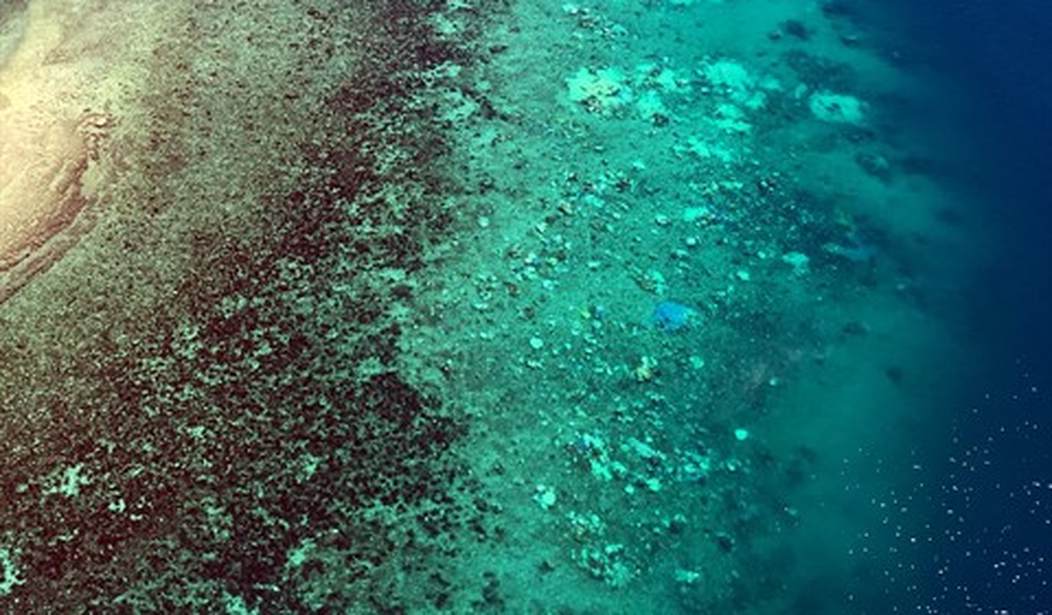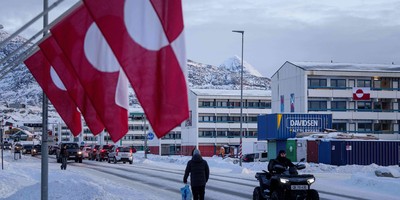Mainstream media love to tell stories about pending doom for Australia's Great Barrier Reef (GBR) and coral in general. They openly blame it on man-made climate change.
Supporting the narrative, they offer photos showing patches of bleached, dead coral asserted to be evidence of irreversible dying of the reef complex.
But the GBR and its many forerunners have withstood the forces of nature over a million years of climate ups and downs during several glacial periods. Yet the reef extends farther and covers more area than ever before in its history. By all expectations, it should continue alive and well far beyond the 21st Century. Can this be so, considering vociferous claims to the contrary?
A coral reef is a dynamic system well attended by Mother Nature. Coral reefs flourish in tropical seas around the world, including the iconic GBR. Some are under duress, others not.
The persistence of coral over geologic time should command our attention even as certain factors appear to threaten its prospects. Resilient coral managed to survive the great global die-off, the cosmic event that rendered dinosaurs and many large animal species extinct some 66 million years ago.
Alarmists cite two principal threats to today’s GBR: 1) thermal bleaching alleged from climate change and 2) fictional ocean acidification mistakenly attributed to excess carbon dioxide being dissolved in sea water, as atmospheric CO2 increases.
Bleaching is part of a seasonal (and reversible) process that coral experience regularly. Various types of algae (symbiotic, single-cell plant-forms) live in residence within the coral's protoplasm while in the business of photosynthesizing carbohydrates. It is a partnership beneficial to both. The algae simultaneously make use of nitrogenous wastes metabolized by the coral while producing sugars, amino acids and other compounds indispensable to coral and all other animals.
Recommended
If a reef becomes stressed from too rapid temperature changes (hot or cold), the coral may reject its algae. Bereft of its green guests, the host loses its characteristic color and turns a dull gray.
As a stress diminishes, coral customarily recover completely and after conditions revert to normal, they admit new algae. Bleaching is an act of self-preservation and does not spell the end to a reef. Detailed observations over the 1,500-mile length of the GBR suggest some of its most adversely affected sections have already recovered.
Parts of the reef fall victim to senescence, even as tree leaves drop in the autumn. But once hospitable conditions resume, a dead reef structure becomes available as a candidate for re-colonization by future generations of coral and other reef dwellers.
Such events have followed throughout the history of the GBR and its predecessors during the previous 23 million years of coral's presence along the coast of Australia.
The edge of the continental shelf, supporting the GBR complex, has crept northward with the steady progress of continental drift. Australia continues to draw away from the colder Pacific waters bordering the Southern Ocean, into the tropical waters of the Coral Sea where reef-forming conditions are optimal.
At the current northern limit of the reef complex (approaching the Equator), coral experience increasingly warmer water. In time, the higher temperatures encountered may impair its growth, with or without anthropogenic climate change.
Regardless of alarmists’claims of ocean acidification, coral possess an innate ability to deposit their exoskeletons in mildly acidic water. Ocean water is nearly always alkaline except in the immediate vicinity of submarine volcanic vents that emit strongly acidic hydrogen chloride. HCl is neutralized in the surrounding highly buffered ocean water, as detailed by noted biologist and author Patrick Moore
A coral’s shell-making activity takes place in a mildly alkaline solution within a protective membrane. Coral are not being threatened by hypothesized ocean acidification in any sense of the word. Given the opportunity, coral would reject categorically being billed as the tropics’ poster-child equivalent of the polar bear.
Critics of this media-popularized narrative point out several other adverse factors that may account for the current stresses on coral: predation by the crown-of-thorns starfish with a special taste for succulent young coral, runoff of fertilizer from nearby agricultural land and from municipal discharges that triggers algal blooms and shading events and the toxic effects of industrial effluents.
Should we inquire about their condition? It’s true their intricate forms present a spectacular underwater show attracting droves of tourists to Australia, the Caribbean, and other exotic destinations.
The coral is also an ancient life-form. The family tree traces back some 240 million years, having survived the previously mentioned most disruptive extinction event in Earth's biological history. Biologists also classify them as close cousins to a jellyfish that decided to settle down.
For anyone who has never seen a reef, the multiple tentacles of mature coral wave upward from the top of the living animal, the polyp. The individual polyp occupies its solitary shell nestled among and interlocked with its sessile neighbors along the top surface of the reef. Upon the polyp’s death, its shell remains as a permanent part of the reef.
Detritus in the form of sand and larger fragments eroded by vigorous wave action directed against the reef's ocean-facing buttress becomes the brick and mortar creating the reef structure as a whole. As time passes, the active reef eventually dies following an extreme weather event or from senescence. It becomes stranded above the tide line during periods of continental glaciations or alternatively drowns in rapid sea-level rises during interglacial melting. Few coral species have the ability to live in deep water.
Modern oceans are at a near still-stand with sea level rising very modestly at 6 to 7 inches per century. Healthy, growing coral can easily keep up with moderate sea rise, as the Pacific atolls have done atop dormant or extinct volcanoes known as sea mounts.
On re-submergence of a dead reef, pioneering coral larvae may arrive on the scene having ridden hundreds of miles on ocean currents to stake claim to the relic structure, creating a brand-new colony. Life for a coral reef begins anew.
The history of the coral family spans nearly a quarter billion years—and counting. Today’s reefs occupy extensive portions of the shallow tropical seas and oceans and form the rims of lagoons in the mid-ocean atolls. The coral are among the most successful life forms ever to grace our watery planet and show no real signs of relinquishing their reign.
William D. Balgord, Ph.D. (geochemistry) heads Environmental & Resources Technology, Inc. in Middleton, WI and is a contributing writer to the Cornwall Alliance for the Stewardship of Creation

























Join the conversation as a VIP Member